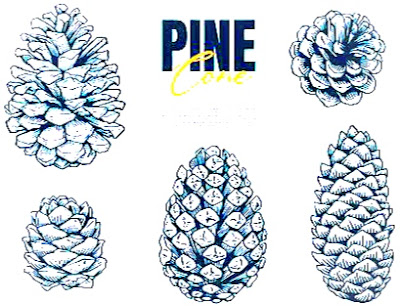Geometry in Nature
Math can be applied to almost everything in the real world. Some of it can be pretty obvious, like counting fruit or adding and subtracting money. However, math also could be more obvious, such as in shapes. This type of math is called geometry and deals primarily with lines, angles, and forms. There are many different types of shapes out there.
Various Examples from nature.
Common geometric shapes include circles, squares, rectangles, hexagons, stars, and triangles. These shapes can even be put together to create patterns.
The pattern on this snake is formed with rectangles of different sizes.
There are many different geometrical shapes. People can observe their surroundings at any given moment and name several shapes. This is because shapes can be 2-D, like the ones listed above, or shapes can be 3-D, such as spheres, or prisms like cubes.
There are a lot of manmade objects that take the forms of different shapes. However, geometry is also often found in nature. There are many geometric shapes in nature, including hexagons in beehives, stars in starfish, spheres like the Sun, Moon, and Earth, and patterns on snakes and butterflies. Shapes in nature are everywhere, and natural shapes make up the world around us.
Geometrical analysis from Nature.
Shapes are all around and can take many different forms. As previously mentioned, shapes can be 2-D or 3-D. Shapes 2-D fall under the category of plane geometry, while 3-D shapes are a type of geometry known as spatial geometry.
Plane Geometry.
These are flat shapes, like paper. These shapes include rectangles, hexagons, squares, and triangles. There are plenty of objects in natural life with plane geometry. For example, starfish have flat stars, a type of plane geometry. Trees also contain plane geometry on the inside of their trunks. If a tree were to be cut down, the center of the tree would show a bunch of circles. Hexagons are the most common shape found in nature. A hexagon would appear if a snowflake were to be traced around the edges. Plane geometry is all around the natural world.
Snowflakes take the form of hexagons.
Spatial Geometry
These shapes have depth and take up space, like spheres, cylinders, and prisms. Manmade objects of spatial geometry include spheres such as balls for sports like tennis, soccer, and baseball. Cardboard boxes are also an example of spatial geometry. Examples of spatial geometry are quite easy to spot once one begins to observe their surroundings.
However, there are also many examples of spatial geometry in nature. Pine trees are like natural giant cones, and pinecones, which contain the seeds for pine trees, also take the shape of a cone.
.
The trees' trunks are cylinders, while the Earth is a giant sphere! Some types of fruit, like grapes, blueberries, and oranges, are also natural spheres. Rocks and pebbles take the shape of a sphere as well. Icicles that form on objects after winter snow take the shape of a natural cone. There are many examples of spatial geometry that are made naturally.
Orthographic projections
Orthographic projection is a standard method of representing three-dimensional objects, usually by three two-dimensional drawings in each of which the thing is viewed along parallel lines that are perpendicular to the plane of the drawing. For example, an Orthographic projection of a house typically consists of a top view, or plan, and a front view and one side view (front and side elevations).

orthographic projection



कोई टिप्पणी नहीं:
एक टिप्पणी भेजें